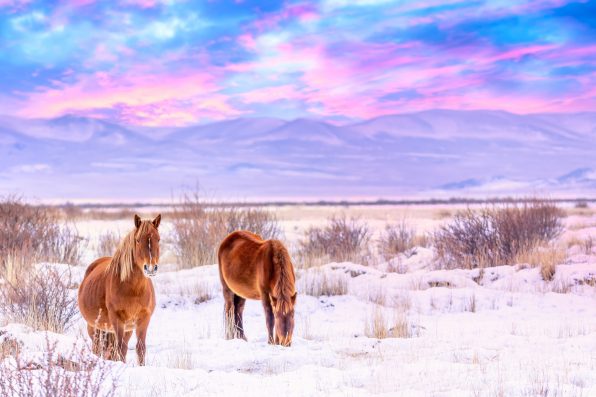Archaeologists Discovered Evidence Of A Human And Horse Sacrifice Ritual At A Huge Burial Mound In Southern Siberia That Dates Back to The Late 9th Century

In southern Siberia, evidence of a human and horse sacrifice ritual was uncovered at a prehistoric burial mound during excavations of an Iron Age site. The site is called Tunnug 1, and it is located in Tuva, Russia.
The burial mound dates back to the late 9th century and is one of the oldest and largest of its kind in the Eurasian steppes. The remains of at least 18 horses and one human were revealed within the mound.
The animals showed signs of being sacrificed to honor the elite individual who was buried there. In addition to the remains, some “Scythian-style” artifacts and horse-riding equipment were unearthed.
“We discovered a unique burial ritual long thought to be an exaggeration of the Greek historian Herodotus aimed at making the steppe nomads look more barbaric,” said Gino Caspari, the senior author of the study from the Max Planck Institute of Geoanthropology and the University of Bern, Switzerland.
The findings indicate that the burial is an early example of the horse-centric funerary rituals the later Scythians held, which were described in Classical European texts.
The Scythians were an Iron Age people who lived on the Eurasian steppe. They were known for their horse-focused culture and their artwork featuring animals.
They migrated from Central Asia to the Pontic Steppe in what is now southwest Russia and Ukraine. However, their exact origins are unclear. The recent finds suggest that they originated far to the east.
The burial mound belonged to a people related to the Scythians. The combination of dead humans with one of the most valuable domestic animals signified incredible power. It sent a message that the people of those lands were a force to be reckoned with.
“Scythian is often understood as an ethnic term,” said Caspari. “The people at Tunnug were not Scythians in the narrow term of the word. We don’t know what they called themselves.”

Nikolay N. Antonov – stock.adobe.com – illustrative purposes only, not the actual horses
“However, their material culture shows a lot of the characteristics that we later find in the northern Black Sea region all the way to the west of the Eurasian steppes. In summary, they were culturally closely related. However, they did not think of themselves as one people or as an empire.”
Furthermore, some elements of the sacrificial burial are similar to examples from the Late Bronze Age in Mongolia.
So, it appears that Scythian funerary rituals partially came from even further east and south than previously thought, with their roots in Mongolia’s Bronze Age horse cultures.
Overall, the discovery highlights the changes and the spread of ideas taking place across the Eurasian steppes during the early Iron Age.
The development preceded the empires of the Huns and Mongols, which significantly influenced European and East Asian histories, according to Caspari.
Sign up for Chip Chick’s newsletter and get stories like this delivered to your inbox.
More About:News





